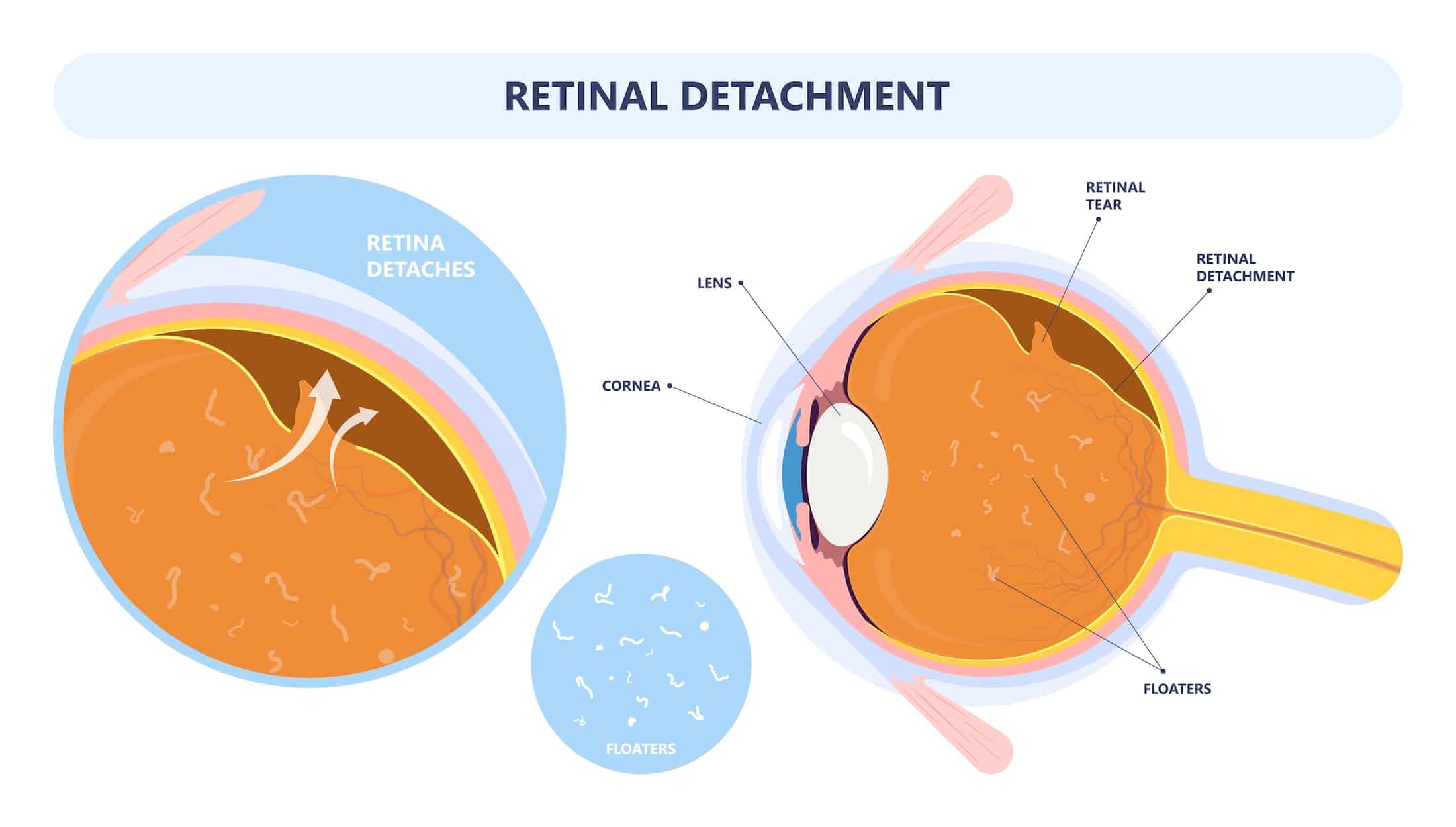Retinal Tear and Detachment
What is Retinal Tear and Detachment?
The retina is the sensory membrane that lines the inner surface of the back of the eyeball. It’s composed of several layers, including one that contains specialized cells called photoreceptors.
Photoreceptor cells take light focused by the cornea and lens and convert it into signals which are transported to visual centers in the brain by way of the optic nerve. These signals are then converted into images. Any conditions related to the retina are to be taken very seriously because many of these conditions, like retinal detachment, can lead to permanent vision loss.
A retinal detachment is an emergency situation in which an area or the entire retina pulls away from the back of the eye. If the retina detaches from the optic nerve, vision can be lost permanently. In some cases, the retina can be torn and this is referred to as a retinal tear. Retinal tears can lead to retinal detachments.

A retinal tear occurs when the clear, gel-like substance in the center of your eye (vitreous) shrinks and pulls on the retina. Left untreated, this pressure may cause the retina to tear away. Eventually, it could completely detach from the nearby choroid tissue, causing blindness.
A retinal detachment is painless, but warning signs may occur before it occurs such as:
- An increase in floaters or sudden appearance of floaters
- Flashes of light in any area of the eye
- Sudden blurred vision
- Gradual reduction of peripheral vision
- A curtain or shadow over your vision
